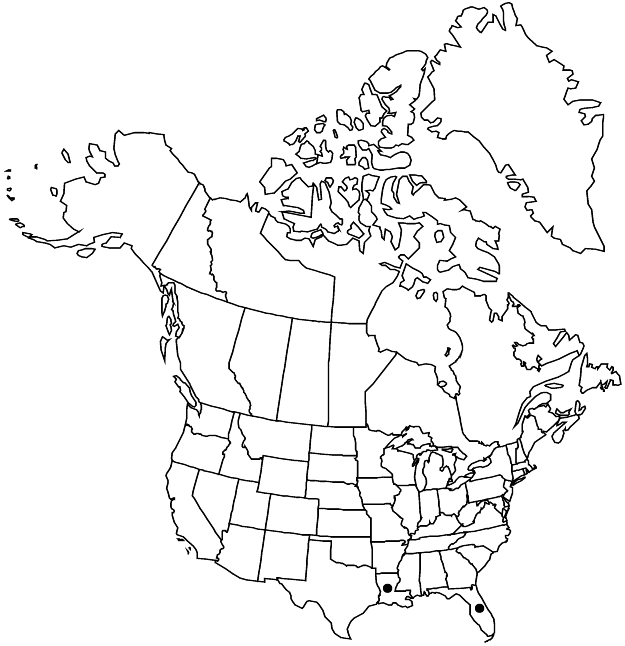Rumex obovatus
Ned. Kruidk. Arch. 1920: 241, figs. 1–3. 1921.
Plants annual [sometimes biennial or perennial in tropics], glabrous or nearly so, with fusiform, vertical rootstock. Stems erect, branched distal to middle or in distal 2/3, 20–40(–70) cm. Leaves: ocrea deciduous or partially persistent at maturity; blade usually distinctly obovate, widest distal to middle, rarely weakly panduriform, 4–7(–11) × 2–5 cm, less than 4 times as long as wide, coriaceous, base cuneate, rarely almost truncate, margins entire, flat, rarely slightly undulate, apex obtuse or rounded. Inflorescences terminal, occupying distal 1/2 of stem, usually lax, occasionally rather dense, interrupted in basal 1/2, broadly paniculate, branches usually straight, unbranched, forming angle of 45° with 1st-order stem, leafy almost to top. Pedicels articulated in proximal 1/3, thickened, 3–5 mm, articulation distinctly swollen. Flowers 10–20 in rather dense whorls; inner tepals ovate-triangular or triangular-deltoid, 4–5(–5.5) × 2.4–3 mm (excluding teeth), ca. 1.5 times as long as wide, base truncate, margins distinctly dentate, apex acute to subacute, straight, teeth 3–5, normally at each side of margins, narrowly triangular or subulate, straight, 0.4–2.5 mm, equaling or shorter than width of inner tepals; tubercles usually 3, equal or subequal, apex obtuse, distinctly verrucose. Achenes brown, 2.3–2.8(–3) × 1.4–1.8 mm.
Phenology: Flowering summer.
Habitat: Mostly coastal habitats: sea shores, river deltas
Elevation: 0-50 m
Distribution

Introduced; Fla., La., South America, introduced in Europe.
Discussion
Rumex obovatus is morphologically uniform. Individuals with panduriform leaves may be mistaken for R. pulcher, which is distinguished from R. obovatus by its less leathery leaves with subcordate to truncate (not distinctly cuneate) bases, usually more-spreading inflorescence branches, and perennial habit. Rumex obovatus was reported for Louisiana by J. W. Thieret (1969c), who followed determinations by K. H. Rechinger. It is known also from Florida and may be expected in adjacent coastal states. Thieret mentioned that one of his collections was made “within 150 feet of the Texas border.”
Selected References
None.